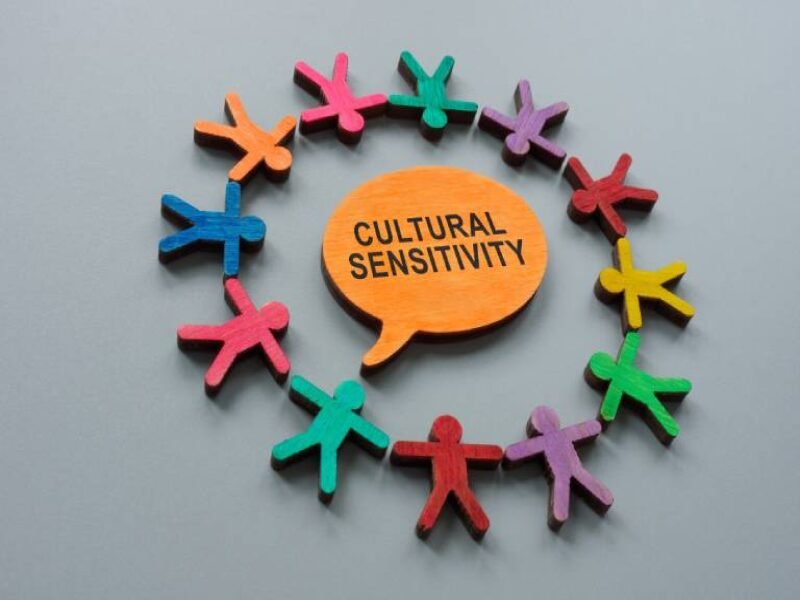Understanding Cultural Appropriation – Cultural Sensitivity
What is Cultural Appropriation?
To certain extent it is true because in our daily life we come across with different culture. The interaction can indeed be enlightening, however, people should be very careful to avoid any form of cultural appropriateness. OK, now let me explain what many people mean by cultural appropriation.
Through cultural appropriation, members of one culture either take, borrow, or impose traits, knowledge, or artifacts from other cultures who did not invite them, fail to understand their needs, or fail to credit them. It involves adopting cultural products that are of immense historical and religious importance and using them for purposes of clothing, amusement or to make money out of them with demystifying the real essence of the cultural products.
This is as far from borrowed desire as one could imagine; this is about power. The borrowing culture may be in a position to benefit from such borrowed aspects while the lending culture stands the risk of being laughed at, disappeared or compounded on their status.

Key Elements of Cultural Appropriation:
To understand cultural appropriation better, let’s break down its key elements:
- Power Imbalance: Generally, it entails the powerful withholding something from those who are helpless and are a minority.
- Misrepresentation: Cultural imageries are innocently employed in a wrong sense or stereotypically which results in an misunderstanding and misrepresentation of culture.
- Exploitation: Those of the dominant culture may benefit from the utilization of such cultural components or symbols without benefit or recognition going to the originating culture.
Where does cultural appropriation take place?
Cultural appropriation might seem harmless on the surface, but it has far-reaching negative consequences:
- Perpetuating Stereotypes and Misconceptions: When performing cultural elements inappropriately or without knowing the background, a good thing can even help maintain stereotypically wrong notions about a specific culture.
- Erasing Cultural Significance and History: Cultural appropriation is destructive because by applying and misrepresenting cultural elements for useless things, cultural references lose their reference frame, history, and struggle.
- Disrespecting and Offending Communities: It can also be especially painful because individuals belonging to the cultural background from which information has been borrowed feel offended and their cultural palette is not valued.
Examples of Cultural Appropriation That Are Easily Recognizable
Cultural appropriation can manifest in many ways, here are some common examples:
- Fashion and Accessories: More so, using Indigenous headdresses as costumes on the music album cover, Indigenous patterns, and designs used without copyright.
- Art and Music: As in artwork to incorporate designs belonging to traditional Indigenous societies, or as in sampling: music produced by societies that are excluded.
- Language and Symbols: Ceremonial, referring to state and traditional beliefs and practices out of context, mimicry of religious symbols without meaning.
- Food: Having a restaurant that prepares and serves food of another culture and not even paying respect to it let alone supporting its people.
Case Study: In 2013 a fashion retail company almost triggered controversy when it sold a product known as the “Navajo Hipster Panty.” The native people, especially of Navajo origin denied this reference because they consider the term ‘Navajo’ sacred; they observed that some of the designs have special cultural meaning to them and labeled the entire episode as nasty cultural rip off. If elements are to be used for commercial use, then aspects of culture attached to them should be well understood.
Practicing Cultural Sensitivity
Now, that we know what cultural appropriation is and why they should not be done let’s look at the ways through which people can be culturally sensitive than instead of being culturally appropriative.
The Art and Science of Not Being Acculture Vulture
Here are some practical steps you can take:
- Do Your Research: When presented with elements from another culture, should ensure that one takes time and understand the meaning of the symbol, its importance and origin. Learn context to avoid work with stereotype and be wary about prejudice and hasty representation.
- Seek Permission and Give Credit: In case you want to take some features from a separate culture, especially if you are going to use it in your business, first, ask the people belonging to this culture about your intentions and always mention the source if you borrow something.
- Support Authentic Creators: Do not purchase imitation mass products made to replicate cultural prints, get products from businesspeople and artists within that culture. It makes sure that the persons who created the work get to be rewarded for it and the cultural practices practiced are not eroded.
- Be Mindful of Context: Do not exploit the cultural symbols on the rudimentary level or in wrong context. For instance, using a headdress that belongs to a sacred culture as a Halloween costume is so insulting and purely childish.
- Listen and Learn: Do not presume that your views are the only correct ones there is, learn to accept anything that may be said by members of the culture you are trying to engage with. If someone comes to you and tells you that they find you offensive or appropriative in some way you reach out and be willing to absorb the feedback that is given to you.
Cultural Appreciation vs. Cultural Appropriation
The line between appreciation and appropriation can sometimes be blurry. Here’s a further breakdown to help you differentiate:
| Feature | Cultural Appreciation | Cultural Appropriation |
| Intent | Genuine interest in learning and understanding | Taking without permission or understanding |
| Context | Respectful engagement and honoring the culture | Using cultural elements out of context or for profit |
| Impact | Builds bridges and fosters cultural exchange | Perpetuates stereotypes and harms the originating culture |
| Examples | Attending cultural events, learning a language, supporting cultural businesses | Wearing sacred items as costumes, using cultural designs without credit |
Remember: Cultural appreciation is about building relationships, fostering understanding, and honoring the richness of diverse cultures. Appropriation is about taking without respect or understanding, often perpetuating harm and inequality.

Promoting Cultural Sensitivity in Your Community
With that in mind, we are all responsible for multiculturalism and cultural sensitivity, and therefore, cultural appropriation. Here are some ways to contribute:
- Educate Yourself and Others: Some ways could be, adopting good movies or documentaries to understand the various cultures in the world or books and articles as well. Exchange knowledge and materials with other people in order to increase people’s awareness of cultural appropriation.
- Speak Up Against Cultural Appropriation: When another person is cross posting POC pain, use your voice and let them know that what they are doing is wrong. To do so, explain why somebody’s improper usage may be considered rude and extend this message to other people in order to make them think differently.
- Support Diversity and Inclusion: Promote intercultural interactions and rise people’s tolerance. Teach your children to speak, embrace and appreciate cultural differences among the neighborhoods too.
Quote: It’s not about cultural appreciation or cultural assimilation, it is about dominance, domination, and obliterating the other. Ms. Cherokee Nation of Oklahoma; Ms. Navajo Nation; Dr. Adrienne Keene, Cherokee scholar and activist.
Addressing Cultural Appropriation
Prevention should go hand in hand with knowing how to handle cultural appropriation in case we come across it at some point. This may not feel easy at times but reclaiming respect and tolerance is necessary.
13 Things To Do When You Witness Cultural Appropriation
Here are some steps you can take:
- Engage in Respectful Dialogue: In case you come across a person regaling in cultural appropriation, you can take time to talk to the person and explain to them why what they are doing is wrong. Explain to others the meaning of the elements being used and the consequence if these people’s actions are to affect the originating cultural grouping.
- Support Those Affected: Nothing speaks louder than the megaphone that directly lets the people who get culture vulture’d express how they feel. Listen to what they have to say, and support them.
- Hold Individuals and Organizations Accountable: Targeted change in perceived appropriateness from consumers and customers who embody cultural bigotry. This means that one should write letters, sign petitions, as well as refrain with using services of companies that engage in cultural appropriation.
Remember: But one should enter these situations with good intentions and well, the aim to enlighten the other person. It is probably unbeneficial to shame or attack someone, although one’s emotions may cause otherwise. But instead of downright rejection, one should concentrate on the process of getting people to understand the necessity of the change they are to go through.
Things to Do When You Realized You Have Appropriated a Culture
Every one of us is capable of making a mistake, and it is easy to offend a culture by mistake. If you realize you’ve done so, here’s how to respond:
- Acknowledge Your Mistake: Accept yourself and the injuries you have caused to other people in the accident. Don’t give excuses or start a defensive stance.
- Learn from the Experience: Take this chance as a moment to learn about the culture you’ve been consuming. Go through website content, social feeds, or forums, engage in articles, podcasts or vlogs presented by members of that community.
- Apologize Sincerely: It is now right to apologize to those people who may have been hurt by our actions. Apologize for the behavior of which you are sorry and pledge for being better in future.
Example: Suppose, for one, you have incorporated an emblem into your art only to perceive it represents something obscene. If an artwork from that culture is interpreted by someone from the same culture and told to you that your use is wrong and why it is wrong, then accept and apologize and if possible you should consider not to use that art or change it.
Data: According to the center for the study of hate and extremism in a 2021 research, hate crimes especially those resulting from bigotry in colors of race, ethnic back ground and ancestry raised to 13%in the year 2020. This brings out the implications of care free cultural relativity and the need to stamp out revelry in cultural expropriation.

Conclusion
Living in the multicultural global village or society calls for understanding of other cultures. Looking at this problem in detail, we will be able to consider cultural appropriation as a way to investigate other cultures with their traditions and reproductions, instead of causing harm.
- Wearing another culture’s cloth is not cultural appropriation if it is not about power play. Ty is essential. By understanding what cultural appropriation is, why it’s harmful, and how to avoid it, we can engage with other cultures respectfully and responsibly.
Remember these key takeaways:
- Cultural appropriation is about power, not just borrowing. It involves taking cultural elements from a marginalized group without permission or understanding, often perpetuating harm and erasure.
- Cultural appreciation is about respectful engagement and learning. It involves seeking understanding, building relationships, and honoring the richness of diverse cultures.
- We all have a role to play in promoting cultural sensitivity. Raise awareness, resist cultural appropriation and promote equality and representation in your locale.
Instead, let’s promise ourselves, that we will work towards creating a society that appreciates each and every culture. In other words, it is incumbent upon the individuals living in our multicultural world to avoid cultural appropriation so we can start to narrow the divide and build a much more equitable society.




